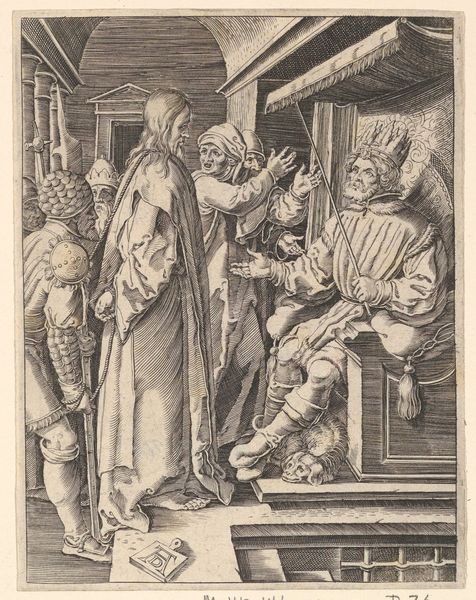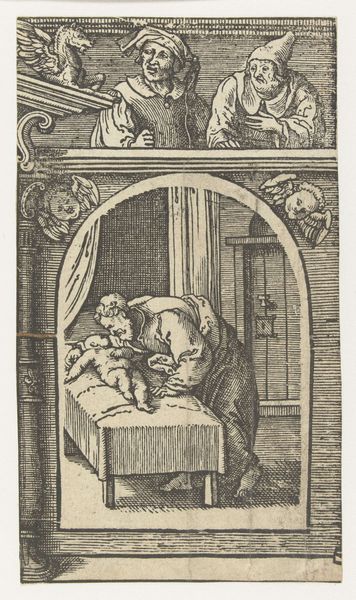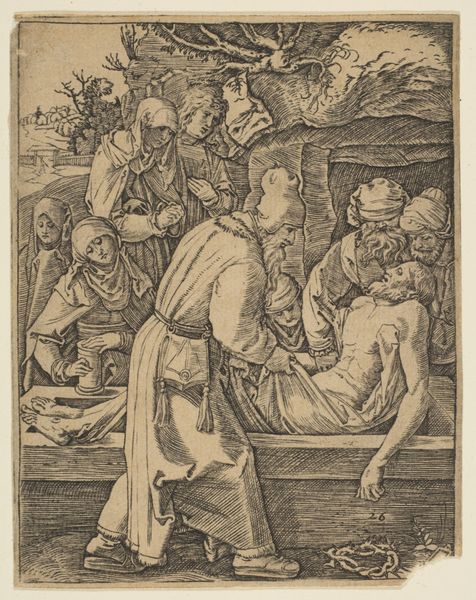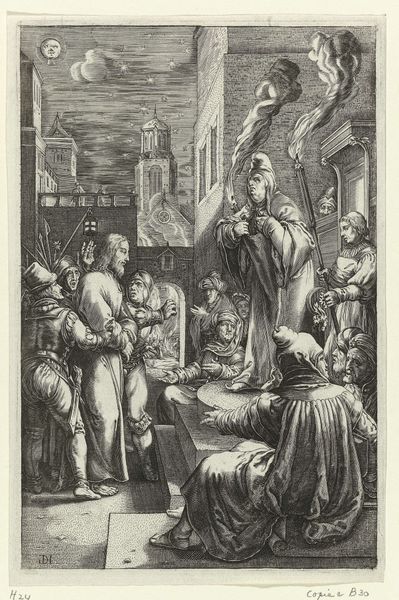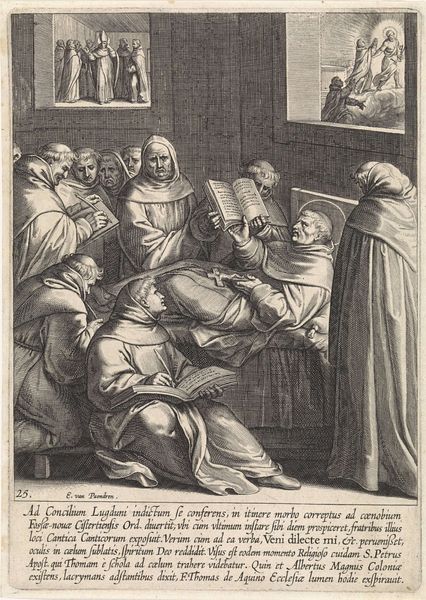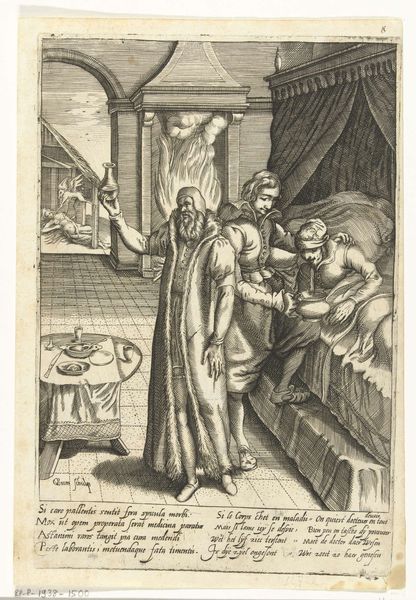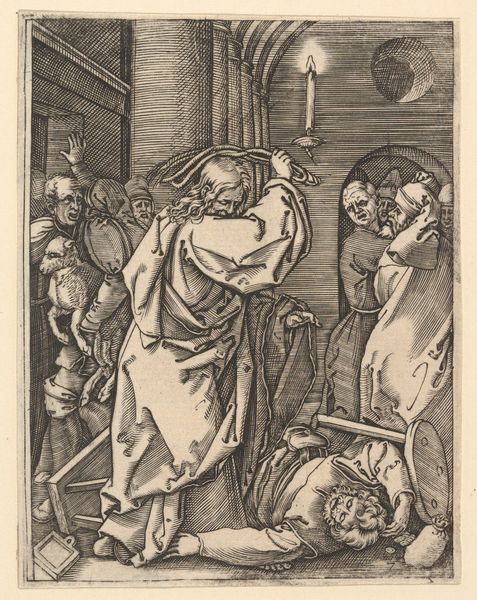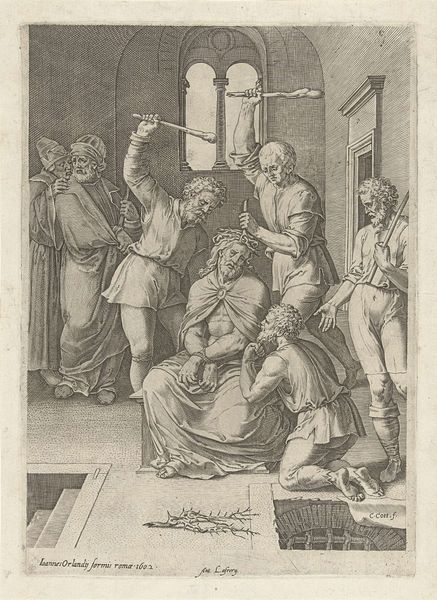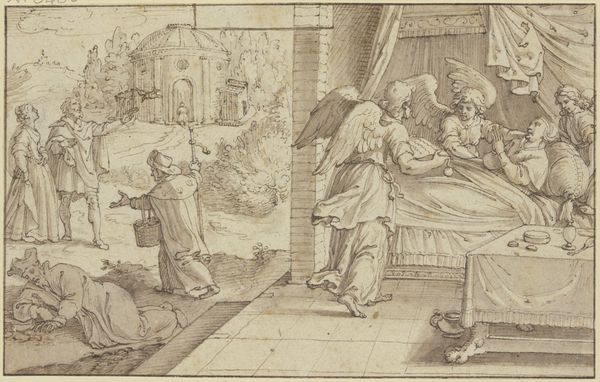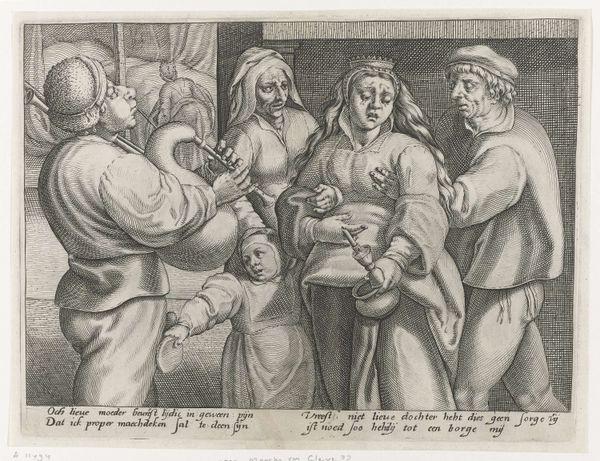
Elia ontfermt zich over de overleden zoon van de weduwe van Sarefat 1550 - 1625
0:00
0:00
Dimensions: height 211 mm, width 279 mm
Copyright: Rijks Museum: Open Domain
Pieter Jalhea Furnius made this engraving of Elijah and the Widow’s Son, sometime between 1545 and 1610. It depicts a story from the Hebrew Bible, in which the prophet Elijah restores life to a young boy. The image creates meaning through a combination of visual codes and cultural references. The setting is domestic, but it also hints at more formal institutional spaces. Look at the foreground where we see Elijah, a holy man with a beard. In the background, a servant carries the limp body of the boy upstairs. The bed is placed in the center; the mother leans over the child to tuck him in, creating a sense of intimacy. As a historian, I would want to understand the religious context of this artwork. The story of Elijah was significant during the Reformation, as it touches upon themes of divine intervention, resurrection, and the power of faith, all subjects that were fiercely debated at the time. By looking at religious texts, pamphlets, and other images, we can understand the role that this image played in early modern religious debates.
Comments
No comments
Be the first to comment and join the conversation on the ultimate creative platform.
